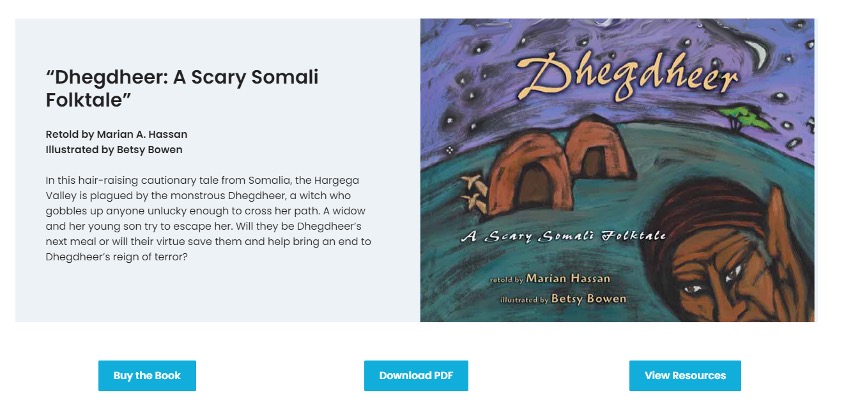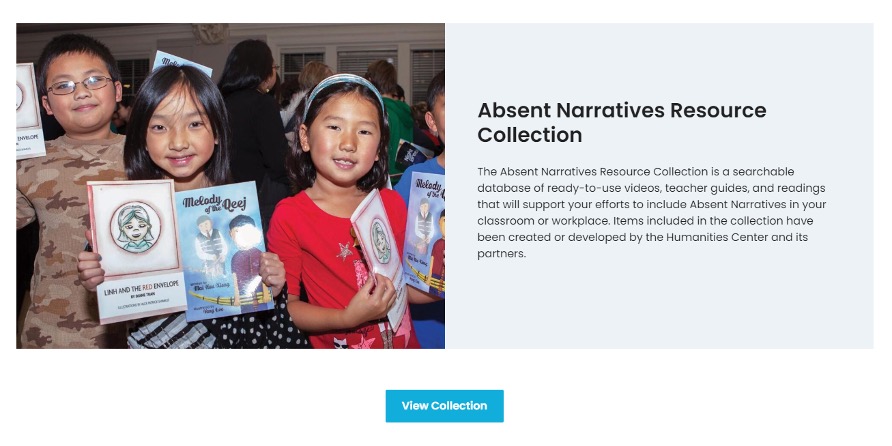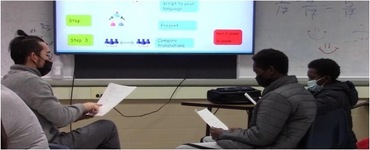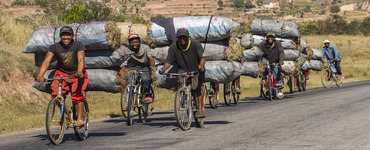This review highlights a few multicultural texts from a collection of literature written by local Minnesota authors and community organizations that have been successfully used in a middle school classroom context.
Keywords: SLIFE, literature, multicultural education, reading, literacy, middle school, elementary
Over thirty years ago, Professor Rudine Sims Bishop wrote her famous essay describing literature in the classroom as either mirrors that allow readers to see themselves or windows into the experiences of others; Bishop challenged the (im)balance of representation available to racially minoritized children (1990, p. 3–4). This work continues to be vital in the education of racialized multilingual learners in America. Unfortunately, literature which represents diverse groups of multilingual learners continues to be limited and subpar. Researcher Yi noted that of the 240 children’s books published in the United States in 2016 with Asian Pacific Islander content, only 31% were written by API authors (2020, p. 7).
Additionally, the use of authentic, culturally relevant texts is also a way to tap into students’ funds of knowledge. Funds of Knowledge theory says that the backgrounds and prior knowledge of students should be incorporated and harnessed for effective pedagogy (González et al., 2009, p. x). Moreover, utilizing funds of knowledge is a way for teachers to engage in culturally responsive teaching and social justice work within their classrooms (Hogg, 2011, p. 674). Choosing literature that reflects a student’s identity actively taps into their funds of knowledge and lays the foundation for building stronger connections between home and school.
The Minnesota Humanities Center (MHC), through grant funding and strong community partnerships, supported the telling of stories of diverse groups including refugees and immigrants. This project, called the absent narrative project, aimed to amplify the stories which are often missing or absent in classrooms and other educational contexts. Additionally, the texts published by the MHC were created through strong partnerships with local authors who could write with cultural legitimacy and authentic representation. The selected texts allow educators and students to dive deep into the rich experiences of multilingual learners, refugees, and immigrants. This review will highlight a few short stories that have been successfully used in a middle school classroom context.
The Bird and the Sun and Other Karen Folktales
The Bird and the Sun and Other Karen Folktales is a gem of a book containing Karen stories and personal narratives from a variety of Karen authors. The Karen people are an ethnic minority group from Burma who face oppression from the Burmese government. As a result, many Karen people have been resettled in the United States (Karen Organization of Minnesota, 2021). Ahmay Ya, a Karen community advocate, and Zander published this book together through a local Hmong bookstore with the support of MHC grant funding and the Karen Organization of Minnesota. A recording of Ahmay Ya’s own journey can be found online through the Minnesota Historical Society’s Karen Community Oral History Project.
The book contains seventeen stories total: four animal-based fables, six fairy tales, three Buddhist wisdom stories, five personal stories, and finishes with a note containing some background information of Karen people. The first three sections include stories that give insight into Karen wisdom and values. Some of the stories are like other folktales and are very recognizable to a non-Karen audience while others are trickier to understand without Karen cultural insight. One additional wisdom story, The Two Leaders: One Wise and One Foolish, written by Ahmay Ya, as re-told by her grandmother Moe Moe, can be downloaded for free through the Journal of Southeast Asian American Education and Advancement.
The final personal stories section contains vivid and tear-jerking narratives of the experiences of Karen people in Minnesota. The personal stories are raw and written in a way that preserves the voice of the speakers. Additionally, the stories are written in a conversational manner that is accessible to language learners.
One classroom application for The Bird and the Sun1 includes using selected stories as a mentor text. The Bird and the Sun contains stories that make excellent mentor texts for creative short story writing or personal narrative writing for students from elementary to high school. Some of the short stories, especially personal narratives, are more suited to secondary aged learners. The texts are written in a way that is accessible to English learners from beginners to more advanced learners. A mentor text is a text that teachers and students examine closely and may return to several times throughout a unit of study (Dorfman et al., 2017, p. 2). Language teachers use mentor texts to show students how an author writes, and students are then able to internalize the concepts and language before producing their own writing.
I selected one personal narrative to use with a group of 8th grade students. On the first readthrough, I paused several times to allow students to negotiate meaning with each other in their home languages. After reading, without prompting, students started sharing their personal connections to the story as well as their emotional reactions to events in the story. The second reading focused on story structure and the author’s use of past tense to illustrate the order of events of the story. Multilingual learners who were not Karen were still able to relate to the themes of othering, cultural dissonance, and language learning within the narratives. After this, the students engaged in some collaborative writing work and finally students wrote personal narratives of their own. The use of Karen personal stories was instrumental as it inspired these students to embark on the challenge of writing their own story.
The Somali Bilingual Book Project
The Somali Bilingual Book Project has published a set of beautifully illustrated Somali books which come with additional resources for teaching. Four illustrated stories are available for free PDF download. There is also an option to purchase a hard copy. Each story is accompanied by bilingual Somali and English audio. In addition, each story also has additional resources and educator guides for suggested uses of the story at various grade levels.
The story Dhegdheer: A Scary Somali Folktale by Marian Hassan is a story of a cannibal woman and her daughter which takes place in the Hargega Valley in Somalia. Though the text presents itself as a children’s book, I found that it still worked in a middle school context due to the scary nature of the plot. In the resources section, there are several videos of Somali author and educator Said Salah Ahmed, who explains the cultural context of the story and hints at the slightly more gruesome alternate ending to Dhegdheer. The educator’s guide has a variety of ideas on ways to use the text. In my class, after spending a few lessons deep reading the text, I asked my students to work in pairs or small groups to present a retelling of a folktale to share with the class. The students were encouraged to ask their family members and friends for ideas. Most students chose a folktale from their cultures and re-told the stories with great pride. This strategy actively utilized students’ Funds of Knowledge through building strong connections between what is valued in school and sources of knowledge from family and home.

Elementary resources
The Reading Together Book Project has published a set of stories that represents Asian Pacific Islander authors and stories targeted at lower and upper elementary grades. The stories include representation from Laotian, Vietnamese, and Hmong culture; there is also a story about a transnational adoptee from the Philippines. These books are available for free PDF download as well as purchase of hard copies.
The Minnesota Indian Affairs Council and the MHC worked together with prominent indigenous authors Heid E. Erdrich and Gwen Nell Westerman to develop a three-book series called Minnesota Native American Lives. Each book is about a Native American person who broke barriers to build a better world. The texts are biographical and aimed at an upper elementary grade level.

Conclusion
Each child should have the opportunity to see themselves and their stories reflected in schools. For teachers who work with refugee or immigrant young people, this literature supports the work of cultivating a sense of belonging through representation. For more resources for use in your classroom, visit the Absent Narratives Resource Collection website or the Absent Narratives Resources Overview.
Note
- The Bird and the Sun, sold by Hmong ABC Bookstore is currently out of print. However, more copies may become available at a later time.
References
Bishop, R. S. (1990). Windows and mirrors: Children’s books and parallel cultures. California State University reading conference: 14th annual conference proceedings (pp. 3–12). California State University San Bernardino.
Dorfman, L. R., Cappelli, R., & Hoyt, L. (2017). Mentor texts: Teaching writing through children’s literature, k-6. Stenhouse Publishers.
González Norma, Moll, L. C., & Amanti, C. (2009). Funds of knowledge: Theorizing practices in households, communities, and classrooms. Routledge.
Hogg, L. (2011). Funds of Knowledge: An investigation of coherence within the literature. Teaching and Teacher Education, 27(3), 666–677. https://doi.org/10.1016/j.tate.2010.11.005
Karen Organization of Minnesota. (2021, Feb. 8). Karen history. Karen Organization of Minnesota. Accessed 1 Nov. 2022 at https://www.mnkaren.org/history-culture/karen-history/
Yi, J. H. (2020). Representations, racialization, and resistance: Exploring Asian American picture books, 1993-2018. ProQuest Dissertations & Theses Global (No. 28262034).








